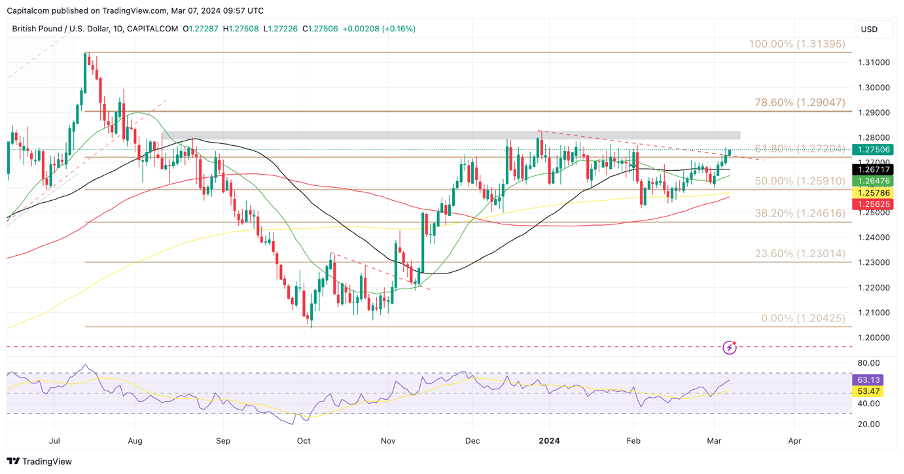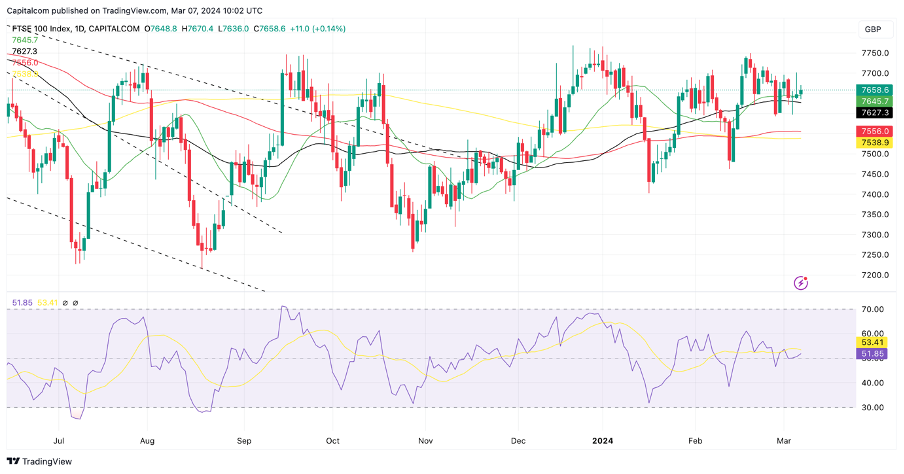UK Budget: Sterling holds its gains as Hunt sticks to what was expected
The pound maintains its bullish bias as Chancellor Hunt unveils limited tax cuts
The Pound is holding its ground across all major pairs on Thursday morning as the UK spring budget delivered what most were expecting. Finance Minister Jeremy Hunt offered no surprises in his latest statement, cutting national insurance, which is paid by workers, by two percentage points. But the UK’s soaring government debt and lacklustre economic performance left little room for further adjustments, meaning that households are still battling with the pressure of high taxes, food prices, and general expenses, which weighs on prospects for economic growth.
Hunt will have been happy to avoid the turmoil that his predecessor caused in September 2022 when unfunded tax cuts caused the bond market to crumble and pushed the pound to a record low against the US dollar. The calmness in markets after his budget was unveiled had more to do with the fact that he stayed on script and delivered only what he could promise, and less to do with the markets perceiving the measures themselves as a major aid to growth in the UK, but it’s still a win.
It also helps that the few measures unveiled do not seem to have derailed the course of monetary policy expectations from the Bank of England. Lowering inflation continues to be one of the central bank’s key targets and some feared that ambitious tax cuts from the government to attract voting power in the upcoming elections could put further pressure on the BoE’s ability to lower consumer prices to the 2% target. That doesn’t seem to be the case, and whilst the BoE continues to be seen as the most hawkish and the least likely to cut in the first half of 2024, markets are still expecting up to 57 basis points of cuts from the bank this year.
Jeremy Hunt also pointed out that the OBR has revised its growth forecast for 2024 from 0.7% in its November forecast to 0.8%. This is a slight improvement from 2023, which saw a growth rate of 0.3% over the whole year and a technical recession in the final half of the year. The OBR then expects growth of 1.9% in 2025, revised up from 1.4% in its November forecast.
GBP/USD has broken above a descending trend line that has been capping the gains since the end of December. The pair is now trading above all four of its key simple moving averages (20,50,100,200) but is heading into a key area of resistance between 1.2790 and 1.2825, which has been unbroken since August last year.
GBP/USD daily chart
 Past performance is not a reliable indicator of future results.
Past performance is not a reliable indicator of future results.
UK stocks pulled back from their daily high on Wednesday after the budget was unveiled. The FTSE 100 had managed to break a pattern of lower highs, but the pullback left the candlestick mostly bare after closing at the lows for the day, suggesting some indecision in the continuation of the upside momentum. The path of least resistance seems to remain higher, but buyers have been slowly losing the upper hand. A pattern of higher lows would start to indicate that bullish momentum is back in play.
FTSE 100 daily chart
 Past performance is not a reliable indicator of future results.
Past performance is not a reliable indicator of future results.